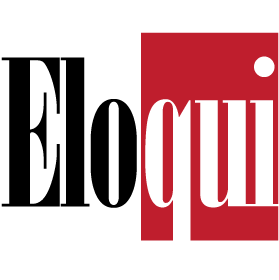When shopping for an illustrator, where do you go first; printed directories, online directories, call a friend, artist reps, or competition annuals? No matter your resource, it’s good to have an arsenal close at hand. Once you get on talent mailing lists, you’ll be left with the task of sorting through the vast array of styles when you most likely don't have the time. No matter how you find someone, perhaps I can help you refine your criteria in making your selection.
Select by style to match the look of work to the message you’re delivering. Most of the calls I get are guided by that. It can be simply the colors I work with, the way I interpret subjects, or the way I compose images. Think about whether you want the medium to be obvious in the work, or if you prefer the subject in the art to be more important. Heavily stylized work will communicate a stronger aesthetic, where a more representational approach puts more emphasis on the content. It obviously would depend on the client’s need and the direction the AD is imagining.
Choosing work by content can sometimes limit your choices unnecessarily. Illustrators draw, so if you’re asking whether they can do a puppy, but you see only kittens in their portfolio, ask before you cross them off the list. It’s wonderful when you can engage someone who specializes in the topic you’re hiring for but are you compromising style for content? It’s impossible for illustrators to have a sample of everything that could come up, so see whether it’s in their comfort zone or within their interest if you feel their style is perfect. If time and budget permit, you could even commission a small sample to be certain. It’s money well spent to get what you really want.
A recommended illustrator is always a good choice. Everyone has their own working style and finding like-minded people always make a working relationship easier. Most of my work partnerships have lasted for many years. You get into a groove where both parties understand better where a project is going or how it needs to be steered. Ask your colleagues who they like to work with and why? Your criteria may be different, but it’s usually worth asking. Some ADs are hands-off and others need to guide direction more closely to meet their clients' expectations.
Stepping out of the safe zone can also produce some fantastic results. I work with a handful of art directors who will call me with something that I’ve never done before. An example is when I was asked to write a word with honey. Good luck finding that in a directory! It was a great example of an idea dictating the process. That kind of request is a challenge and a fun diversion from a typical assignment. Because this AD didn’t see anything like what he was imagining, it was very exciting to make it happen. Of course, you would only do this with someone you have a trusted relationship with or are brought in on a recommendation. Don’t be afraid to ask for more than what’s in front of you. It raises the bar for everyone.
A good process is critical to getting a project from concept to completion. Go ahead and ask a potential illustrator for samples of their process from rough sketches to final art. Clients who ask me to see my process make me feel that they’re more engaged and informed. It’s also a way to understand better what’s involved in that particular illustrator’s style and how they contribute to a project. Are their rough sketches on target with the final outcome and does their work progress in a way that makes good sense? An organized and systematic way of developing art will most likely lead to a better final product that’s on-point. If an AD learns what to expect, both parties will be more patient throughout the development of a finished product.
The next issue will address when is the “right” time to contact an illustrator. You probably have a system in place but these tips may help you choose when to reach out.

